The New Gastronome
Chasing Sourdough
My Bread Journey
by Nil Erdoğan
by Nil Erdoğan
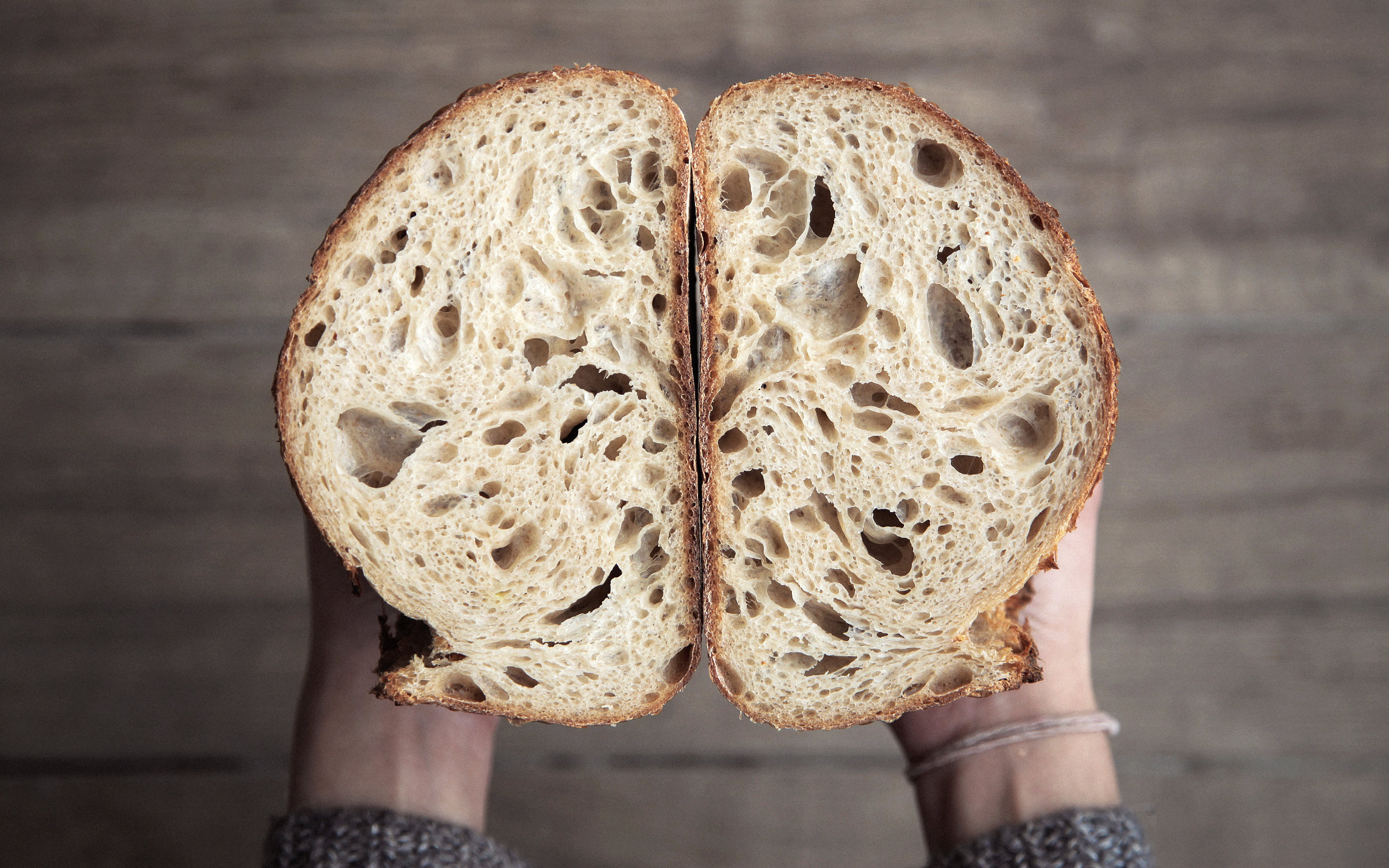
One of the most distinct memories of my childhood is the scent of bread. Now and then, my mother would send me to the bakery around the corner to buy some for breakfast and whenever the smell of those delicious loaves of bread reached me, it lightened up my day. As I bid the baker goodbye and rushed back home, I always took a piece from the corner of the bread for myself.
As children, we loved bread with tomato paste. When we took a break from playing games, we always ate it as a snack. Even though this was a very simple dish, we thought we were eating the greatest thing in the world. Sometimes a bit of butter was spread under the tomato paste and some red pepper flakes, mint and walnuts were placed on the top. If the bread was warm, we devoured it immediately. Nowadays, when I’m at a random dinner and see bread on the corner of the table, it gives me confidence and a sense of peacefulness. I think it evokes the same thoughts in all our minds, thoughts of labour, sincerity, passion and, mostly, sharing.
Bread is frequently consumed in our country. It is the sine qua non at Sunday breakfasts and dinners where the whole family comes together. But when we eat bread, we must also think about its precious journey from the field to the table. First, seeds are planted, maintained and rested until harvest. Then, they are collected, cleaned, turned into flour in a mill, packaged and, eventually, made into bread by professional and home bakers. With the latest techniques, knowledge and training available to everyone, more and more people are now learning to make a good loaf of bread.
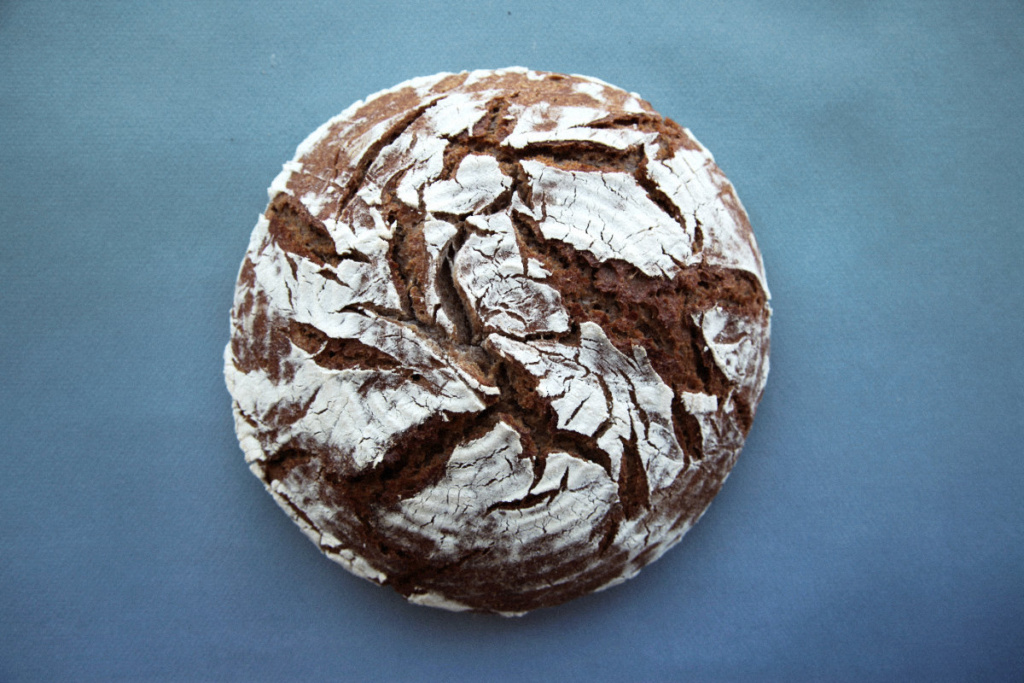
My childhood memories aside, I had my first encounter with real and good bread when I went to Italy in 2010. One of the main reasons for this was that the bread in big cities was generally made with industrial yeast and missing many nutrients. Of course, you don’t realize these things in childhood, but as you get older, some things change in your life. For me, it was having the chance to experience the bread in Italy.
A. D. V. E. R. T. I. S. I. N. G.
After returning to my country, I wanted to do something about this. Since I couldn’t find any Turkish sources at the time, I accessed foreign books about sourdough on the Internet, but it was still a distant topic for me and the bread I was making at home did not turn out as I had expected. I started thinking that doing an internship in a bakery in Istanbul would give me a good experience and began working in a few different places. The bakers there were kind and tried to help me, but even they didn’t know exactly what sourdough was. Some said their sourdough came from abroad, some claimed to make sourdough was very difficult and some seemed convinced that taking a piece of industrial yeast dough and reusing it in the next production was sourdough. I even saw bread, which was made entirely of industrial yeast, sold under the name of sourdough. In short, at that time I thought making sourdough was a very complicated task, when, in reality, the whole process was flour, water, time and patience!
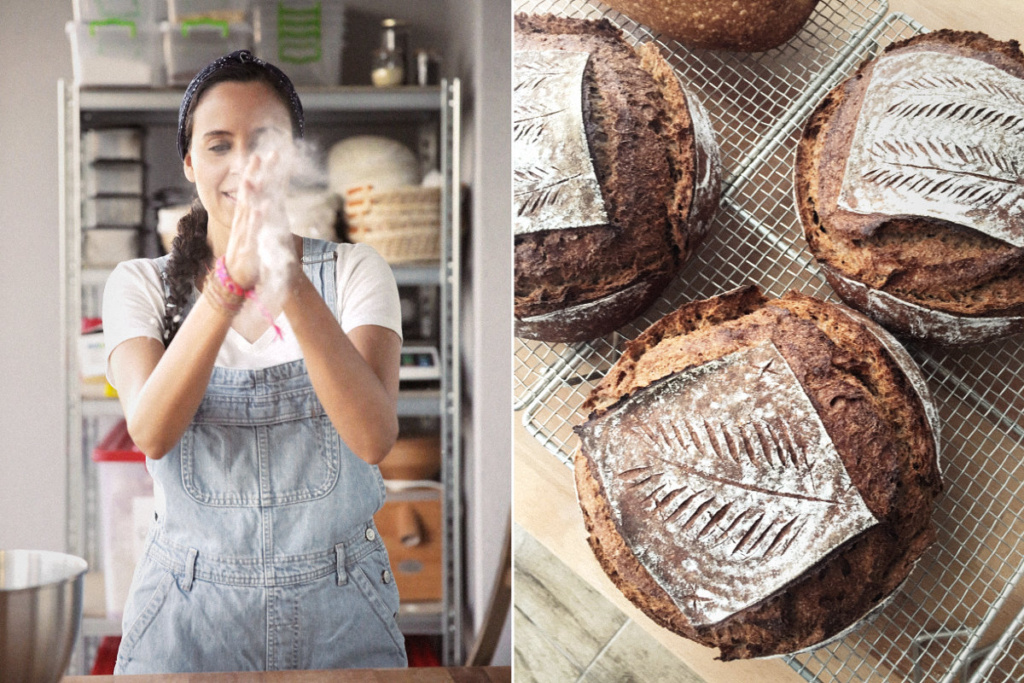
At that time, because of my responsibilities and the decision to support my family’s business, I delayed making sourdough bread and postponed my dream of opening a bakery. But when Taha came into my life two years ago, my path crossed with bread again. Taha works as an instructor chef at one of Istanbul’s best cooking schools. He gives courses on pastry and bakery. One day, while we were sitting, he told me that one of his dreams was to write a book about sourdough and he said that maybe now was the right time. I got excited and was looking forward to finally learning what real bread was!
“I started thinking that doing an internship in a bakery in Istanbul would give me a good experience and began working in a few different places. The bakers there were kind and tried to help me, but even they didn’t know exactly what sourdough was.”
With the support and strength we gave each other, Taha’s book Karakılçık (Blackwheat) was born as a result of his 8 years of research. Blackwheat is the most suitable type of wheat for bread-making among the ancestral types in my country. Though it was close to becoming extinct a while ago, it is now one of the most used wheat varieties, grown in certain regions as both bread and durum wheat. Taha chose the name “Blackwheat” to remind people of this ancestral type of wheat and because he wanted an unusual name for his book – the first detailed full-source book about sourdough to show up in our country.
Meanwhile, I started making and selling bread at home to improve my baking abilities. In the beginning, I was acting without thinking much. Then, I gradually started to learn the language of bread. I am just now noticing how much I have improved since the first bread I ever baked. I started to gain my own experiences and, even today, I still continue to improve myself. But having been on my sourdough journey for a while, I am ready to share my adventure in the world of making sourdough bread, thanks to the book Karakılçık.
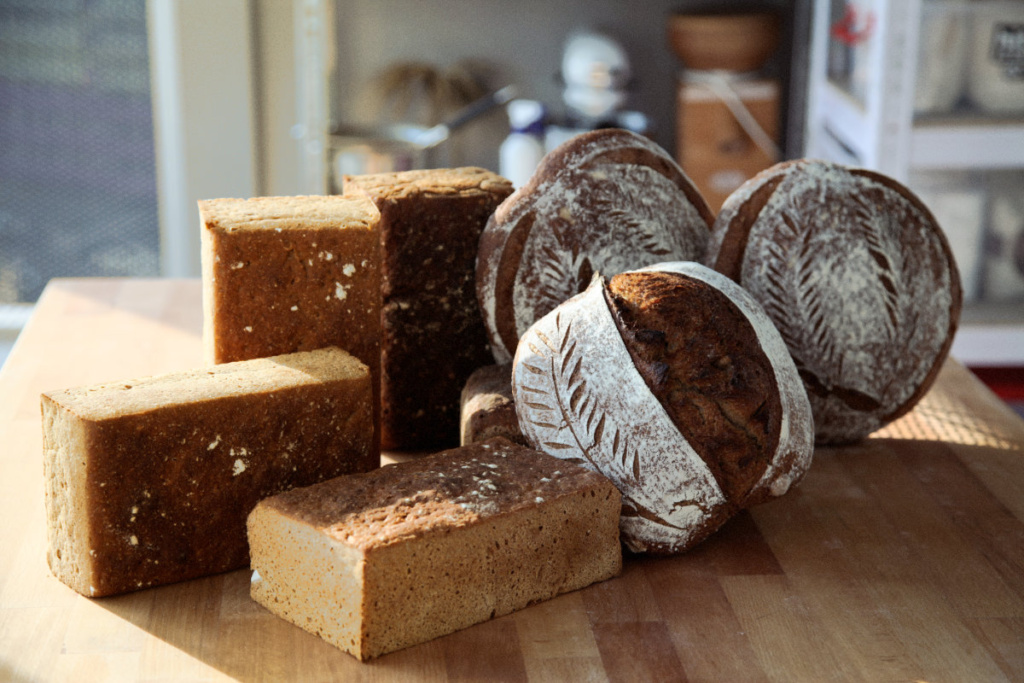
One of the most important things to consider in making bread is the protein level of wheat. When two of the main proteins of the wheat are combined with water, they form a network called gluten. This network gives the bread a good volume and texture. When making sourdough bread, I prefer flours with a gluten rate between 11%-13%. Apart from that, of course, I prefer to use ancestral wheat types such as einkorn, blackwheat, farro and spelt. As these types are low in gluten, I encounter a tighter crumb and usually bake them in a mould. You can also get good results by mixing them with high-gluten flours. Another important ingredient in bread-making is water. Thanks to water, the fermentation process starts and gluten bonds begin to form in our dough. I generally prefer to use drinking water as it is rich in minerals and vitamins. Tap water can be used too but chlorinated water can negatively affect yeast activity. If you want to use (chlorinated) tap water, leave it uncovered overnight to let the chlorine evaporate. Another alternative is to use filtered water. The temperature of the water is also very important for the correct functioning of the fermentation process. In summer, I generally use cold water. In winter, on the other hand, I like using water at room temperature. Finally, another great ingredient in bread-making is salt. Salt significantly contributes to the control of fermentation, tightening the dough. However, adding too much or too little salt to your dough can negatively affect the taste and structure of the bread. I prefer rock salt or sea salt. The taste of iodized salt is more dominant than the others, and table salt is a refined product and therefore lacks minerals.
When making my main sourdough, I prefer to use a good whole wheat (ancestral, if possible) or rye flour. They are much richer than other flours in terms of nutrients, fibre and minerals. Since I am a home baker, I keep my main sourdough in my refrigerator. I feed it once a week, use as much as I need for making my bread and put it back in the fridge. I call this my starter. If I am not in a hurry, I prefer to feed the starter twice before using it in bread-making. In this way, I balance lactic acid and acetic acid production and obtain a more active starter. I don’t use my starter until it is doubled in size.
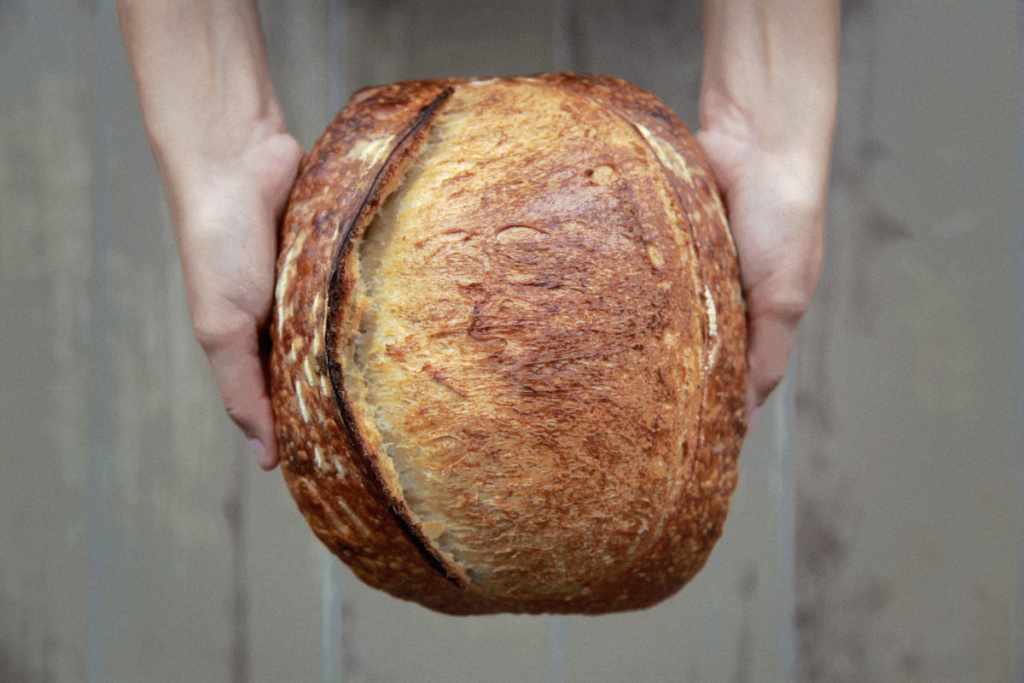
As it is not always easy to reach the right conclusion with the rule of thumb, I always use a scale in bread-making. While making classic bread varieties, I make autolysis for an hour, for which I mix only flour and water – though some recipes also include the starter. Thanks to autolysis, a method founded by Professor Raymond Calvel, gluten gradually begins to activate and the dough gains an elastic structure. It also reveals the gluten, allowing it to be kneaded less. When flour isn’t kneaded too much, it retains its natural colour and bread becomes more aromatic at the same time. However, if you miss the autolysis period, you may encounter a dough that begins to rot. After completing the autolysis phase, I add my starter and wait another half hour. This has a positive effect on taste and texture, but you don’t have to wait if you don’t have enough time. At the last stage, I add salt. If the consistency of the dough needs extra water at this stage, I add it. When the dough becomes integrated and ready, I put it in an oiled bowl, cover it and keep it at room temperature.
Now, I can start my first fermentation which is called bulk fermentation. In this process, as the dough spreads, I fold it a few times, then leave it on its own. When my dough reaches fifty per cent of its volume, I portion and pre-shape it and wait. Then, I give it the final shape according to the softness, hardness or simply the shape I want and put it in a basket. I keep it out a little more and put it in the fridge for cold fermentation. Of course, you can bake your bread on the same day, but when you have time for cold fermentation, the flavours get strong and rich. At the end of cold fermentation for at least 12-16 hours, I cut my bread, put it in the preheated oven, add steam and bake it. Steam is important for your bread to rise and gives colour to your crust.
“Meanwhile, I started making and selling bread at home to improve my baking abilities. In the beginning, I was acting without thinking much. Then, I gradually started to learn the language of bread.”
Since we have a stone-based oven in our house, I can bake my bread like a ‘professional’. I also have an oven stone, which I add to the oven while it is preheating and leave at the highest temperature for about 40 minutes. At the bottom rack of the oven, I put a heat-resistant cup to get steam. After I put my bread in, I pour cold water into the cup and get the steam. For me, this is the method that guarantees the best results. If you don’t have an oven stone, a cast iron pot or pan also ensures a very successful performance. They can isolate the heat perfectly causing your bread to rise well. Before throwing your dough into the cast iron pot or pan, you must preheat it in the oven for 40-60 minutes. After putting the bread in the pot or pan, cut it, close the lid and put it in the oven. If your pot or pan has a lid, steam isn’t needed because the bread is cooked with its own steam.
And finally, the most beautiful moment arrives! We are at the stage where we get to take the bread that we made with great effort out of the oven. I put my hot bread on a cooling wire and let it cool at room temperature for a few hours before slicing it. This period changes, especially in ancestor wheat. Because of the low gluten structure and less starch in this kind of wheat, it takes time for the fibre to absorb the liquid. Be patient.
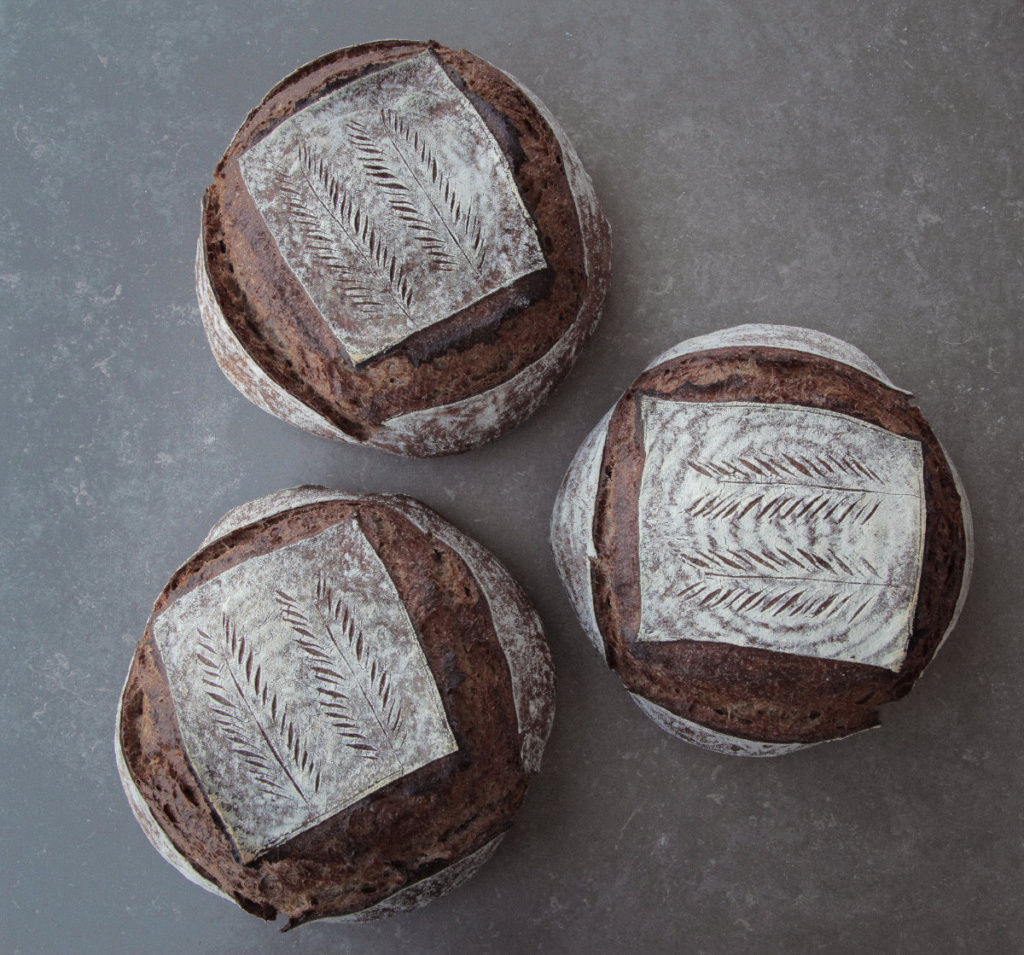
When we come to store our sourdough bread, it’s good to know that they are not easily spoiled. I usually keep my bread wrapped in a cloth at room temperature. If the bread doesn’t get any air, moulding begins. I put the rest of my sliced bread into the freezer, as I can easily consume it by heating it in a toaster or cast iron pan. Storage conditions also vary depending on the type of bread. For example, it is always better to consume flatbread right away or daily.
It’s said that billions of pieces of bread are thrown away every year. This is a terrible figure. Bread is spoiled due to various reasons such as buying more than necessary, not keeping the purchased bread under proper conditions, and low quality. In addition, other factors that increase waste are unconscious production, poor transportation and wrong packaging. I think we are all a little more aware of these issues and the things we need to do to reduce waste, which most of the time are very simple.
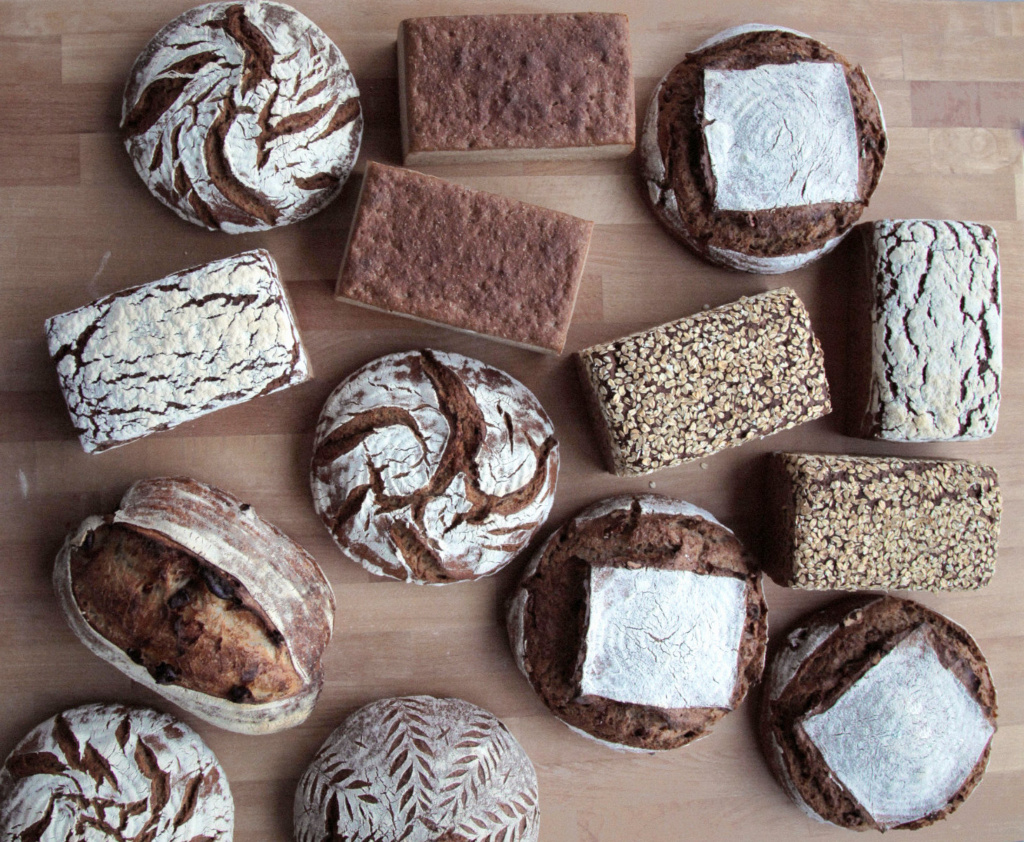
Now, I would like to share with you a recipe of simit, which is a very common street flavour in my country. We eat it in our daily life, at breakfast, during lunch breaks, sometimes we throw it off sea boats to share it with the seagulls. Of course, in this case, we will make this recipe with sourdough from the book Karakılçık.
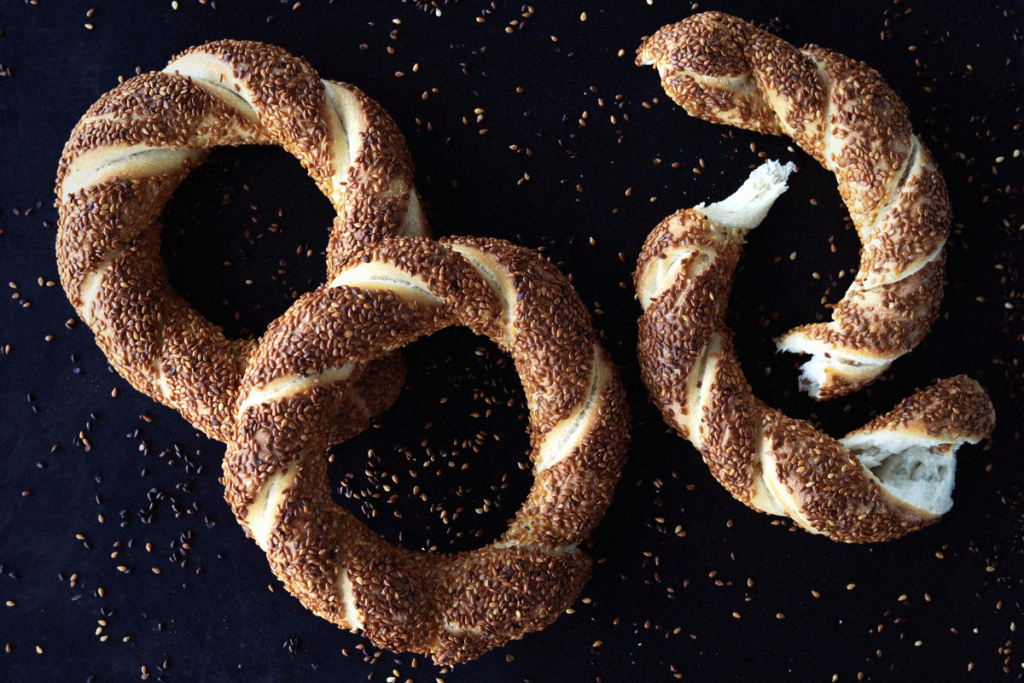
Sourdough Simit
Ingredients
500 g bread flour
220 g water
100 g starter
—————–
10 g salt
10 g water
—————-
For the Top
250 g water
125 g grape molasses
300 g sesame seeds (roasted)
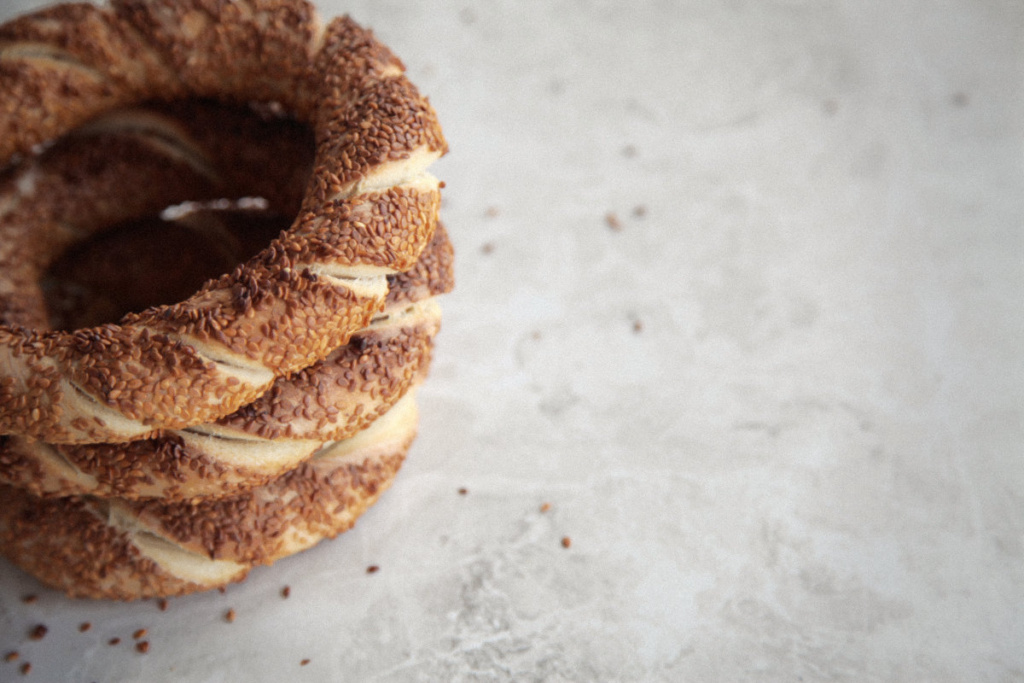
Preparation
Mix bread flour, water and starter until homogeneous. Cover and leave at room temperature for 30 minutes. Add salt and water. Knead your dough in the mixer for 7-8 minutes and put it in an oiled bowl. Since our dough is hard, no folding is needed. Ferment for about 3 hours at room temperature. Put your dough in the fridge for 12-16 hours for cold fermentation. Take it out of the fridge and cut it into 120 g pieces. Make middle-long and thick sticks. Cover and let them rest at room temperature for 20-40 minutes. Make your sticks longer, reunite the two ends together and make auger. Then, create a ring shape. Soak your dough in a molasses which is mixed with water. Strain well and coat with roasted sesame seeds. Extend the rings and place them on a tray. Cover and ferment for 3-4 hours at room temperature. Set the oven to 260 degrees. Put your simits in. Steam is not released. Reduce the degree of the oven to 250. Bake them at 250 degrees for 15-20 minutes and leave to cool on the cooling rack. Bon appetit!